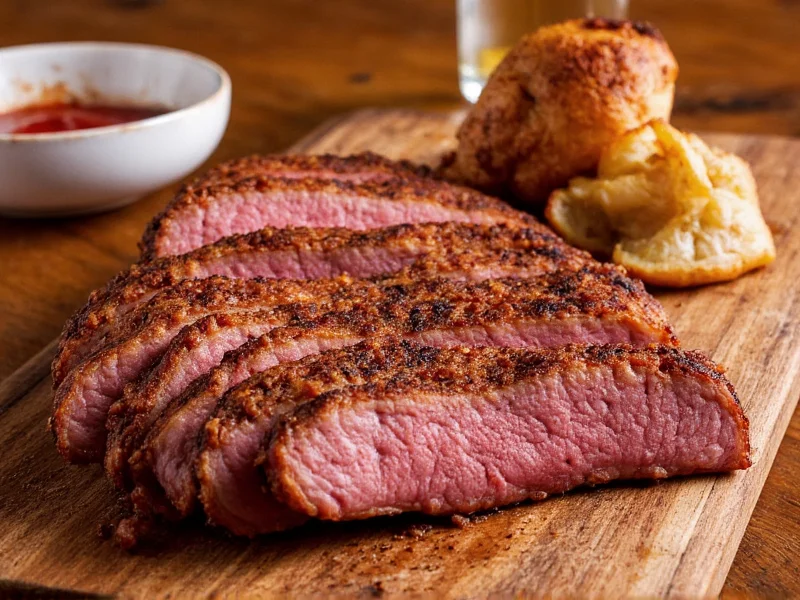Adobada refers to a traditional Mexican dish featuring pork marinated in a rich adobo sauce made from dried chilies, vinegar, garlic, and spices. This flavorful preparation method originates from Spanish culinary traditions and is particularly popular in Northern Mexico and Baja California, where it's commonly served as taco filling often accompanied by grilled pineapple.
Understanding the Meaning and Origins of Adobada
When you encounter the term "adobada" on a Mexican menu or in a recipe, you're looking at one of Mexico's most beloved culinary preparations. The word itself derives from the Spanish "adobar," meaning to marinate or season. This culinary technique traveled from Spain to Mexico during colonial times, where it evolved into the distinctive preparation we know today.
Unlike regular adobo (which refers to the marinade itself), adobada specifically describes meat—almost always pork—that has been marinated in this flavorful sauce. The traditional adobo marinade typically includes guajillo or ancho chilies, vinegar, garlic, cumin, oregano, and other spices that tenderize the meat while infusing it with deep, complex flavors.
Culinary Characteristics of Authentic Adobada
What makes adobada stand out from other marinated meats is its distinctive preparation process and flavor profile. The pork—usually pork shoulder—is submerged in the adobo sauce for an extended period, often 24-48 hours, allowing the acids in the vinegar to break down connective tissues while the spices penetrate deeply.
| Component | Traditional Ingredients | Modern Variations |
|---|---|---|
| Base Chilies | Guajillo, ancho, pasilla | Chipotle for smokiness |
| Acid Component | Vinegar | Lime juice or orange juice |
| Common Additions | Garlic, cumin, oregano | Pineapple, cloves, cinnamon |
| Cooking Method | Grilled over open flame | Slow-cooked or braised |
The cooking method significantly impacts the final product. Traditional preparation involves grilling the marinated pork over an open flame, which creates a beautiful char while keeping the interior tender and juicy. Many establishments in Baja California cook adobada on vertical spits similar to those used for al pastor, allowing thin slices to be shaved off as needed.
Regional Variations Across Mexico
While adobada is enjoyed throughout Mexico, regional differences exist that reflect local preferences and available ingredients. In Baja California, you'll often find adobada served as tacos with grilled pineapple—a combination that balances the rich, spicy meat with sweet, caramelized fruit.
In Central Mexico, particularly in states like Jalisco and Guanajuato, adobada might be prepared with slightly different chili combinations and served with traditional sides like refried beans and handmade tortillas. Some regions incorporate additional ingredients like achiote or hoja santa into their adobo marinades, creating distinctive local variations.
Distinguishing Adobada from Similar Mexican Dishes
Many people confuse adobada with other Mexican preparations like al pastor or carnitas. While they all feature pork, the preparation methods differ significantly:
- Adobada - Pork marinated in adobo sauce, typically grilled
- Al Pastor - Inspired by Lebanese shawarma, often includes pineapple and is cooked on a vertical spit
- Carnitas - Pork slow-cooked in its own fat until tender
Another common point of confusion is between "adobo" (the marinade) and "adobada" (the marinated meat). Understanding this distinction helps when navigating Mexican menus or recipes. When someone asks what does adobada mean in culinary contexts, they're specifically inquiring about the prepared meat dish rather than just the seasoning blend.
Cultural Significance and Modern Adaptations
Adobada represents more than just a tasty meal—it embodies the fusion of Spanish and indigenous Mexican culinary traditions. The preservation technique of marinating meat in acidic solutions with spices dates back centuries, serving both practical and flavor-enhancing purposes.
Today, adobada has gained international popularity as Mexican cuisine has spread globally. You'll find authentic adobada at taquerías specializing in Northern Mexican cuisine, while creative chefs have adapted the concept for modern fusion dishes. Some restaurants now offer chicken or even vegetarian "adobada" using the traditional marinade with alternative proteins.
When exploring what adobada means in Mexican food culture, it's essential to recognize its role in everyday Mexican dining. Unlike special occasion dishes, adobada appears regularly on menus as a beloved staple that showcases the depth of Mexican culinary artistry through simple yet sophisticated flavor combinations.
What's the difference between adobada and al pastor?
Adobada features pork marinated in a traditional adobo sauce of dried chilies and vinegar, while al pastor incorporates Middle Eastern influences with its vertical spit cooking method and characteristic pineapple topping. Though similar in appearance, their marinades and preparation techniques differ significantly.
Is adobada always made with pork?
Traditionally, yes—adobada specifically refers to pork prepared with adobo marinade. While some modern variations use chicken or other proteins, authentic adobada uses pork shoulder or butt, which stands up well to the acidic marinade and benefits from the long marinating process.
Why is pineapple often served with adobada?
The tradition of serving grilled pineapple with adobada, particularly in Baja California, creates a perfect flavor balance. The natural sweetness and acidity of the caramelized pineapple counteracts the richness of the marinated pork, enhancing the overall eating experience without overpowering the complex adobo flavors.
How long should adobada marinate for optimal flavor?
For authentic adobada, marinating for 24-48 hours yields the best results. This extended period allows the acids in the vinegar to properly tenderize the meat while the spices fully penetrate, creating that signature deep, complex flavor profile that defines proper adobada preparation.
Can I make adobada at home without special equipment?
Absolutely. While traditional preparation uses open-flame grilling, you can achieve excellent results at home by marinating pork shoulder in adobo sauce for 24-48 hours, then cooking it in a skillet, oven, or standard grill. The key is the marinade and proper marinating time rather than specialized equipment.











 浙公网安备
33010002000092号
浙公网安备
33010002000092号 浙B2-20120091-4
浙B2-20120091-4